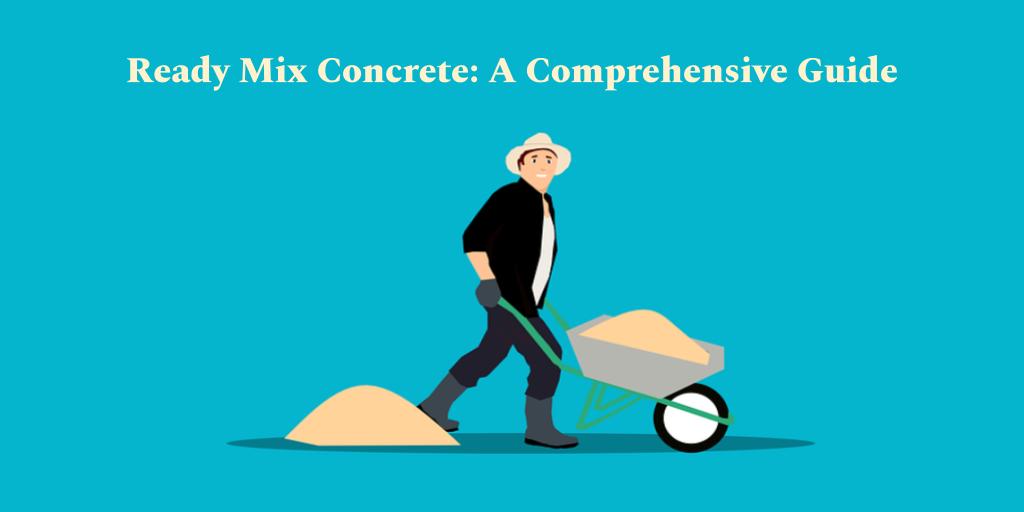Concrete is a versatile and durable construction material that is widely used in construction projects.
Ready mix concrete, also known as RMC, is a type of concrete that is manufactured in a batching
plant and delivered to the construction site in a ready-to-use state. In this article, we will explore
what ready mix concrete is, how it is produced, its advantages and disadvantages, and its
applications.
What is Ready Mix Concrete?
Ready mix concrete is a type of concrete that is manufactured in a batching plant according to a set
recipe, and then transported to the construction site in a transit mixer. The mixing of concrete
ingredients is done at the plant, and the final product is delivered to the site in a ready-to-use state.
The use of RMC eliminates the need for on-site mixing of concrete, which saves time, labor, and
reduces construction site congestion.
How is Ready Mix Concrete produced?
Ready mix concrete is produced by combining cement, aggregates (sand, gravel or crushed stone),
and water in a batching plant. The quality of the concrete produced depends on the quality of the
ingredients used and the production process followed. The concrete mix is designed to meet the
specific requirements of the construction project, and the ingredients are measured in a precise
manner to ensure the desired mix proportions are achieved.
Advantages of using Ready Mix Concrete
Using ready mix concrete in construction projects offers several advantages, including:
- Consistent Quality:
RMC is produced in a controlled environment using high-quality ingredients, which ensures that the final product is of consistent quality. This consistency in quality reduces the risk of structural failures and ensures that the construction project meets the required specifications. - Saves Time and Labor:
The use of RMC eliminates the need for on-site mixing, which saves time and labor. This results in faster construction and reduces the number of workers needed on the construction site. - Reduces Construction Site Congestion:
The use of RMC reduces construction site congestion, as there is no need for on-site mixing of concrete. This results in a safer and more organized construction site. - Environmentally Friendly:
It reduces the carbon footprint of construction projects, as the production process is more efficient than on-site mixing. The batching plant is designed to reduce dust and noise pollution, and the use of transit mixers reduces the number of trucks needed on the road.
Disadvantages of using Ready Mix Concrete
Using ready mix concrete in construction projects also has some disadvantages, including:
- Cost:
The cost of RMC is generally higher than on-site mixing. However, this cost is offset by the savings in time, labor, and reduced construction site congestion. - Limited Time:
It has a limited time for use once it is mixed, which means that it must be used promptly after delivery. This can be a challenge if there are delays in the construction schedule. - Limited Flexibility:
The use of RMC limits the flexibility of the construction project, as the concrete mix cannot be easily adjusted on-site. This means that any changes in the mix design must be made at the batching plant.
Applications of Ready Mix Concrete
Ready mix concrete is used in a wide range of construction projects, including:
- High-Rise Buildings:
The use of RMC is common in high-rise buildings where the large volume of concrete required makes on-site mixing impractical. It is delivered to the upper floors of the building using pumping systems, which ensures that the concrete is delivered in a timely and efficient manner. - Infrastructure Projects:
RMC is also commonly used in infrastructure projects such as highways, bridges, and airports. These projects require large volumes of concrete, and the use of RMC ensures that the concrete is delivered quickly and efficiently. - Commercial Construction:
RMC is used in a variety of commercial construction projects, including shopping malls, office buildings, and hotels. The use of RMC ensures that the construction project is completed on time and within budget. - Residential Construction:
RMC is also used in residential construction projects such as housing developments and apartment buildings. The use of RMC ensures that the construction project is completed quickly and efficiently, which reduces construction site congestion and minimizes disruption to nearby residents.
Future of Ready Mix Concrete
Ready mix concrete has been widely used in the construction industry for many years, and its popularity is expected to continue to grow in the future. As the demand for infrastructure and urbanization increases, the use of RMC will continue to rise. In this article, we analyze the future demand for RMC and the factors that will drive its growth. According to the Insight Partners study, the ready mix concrete market size is expected to grow from US$ 844.10 billion in 2022 to US$ 1,118.18 billion by 2028; it is estimated to grow at a CAGR of 4.8% from 2022 to 2028.
Conclusion
RMC is a popular construction material that offers several advantages over on-site
mixing of concrete. It is produced in a controlled environment using high-quality ingredients, which
ensures consistent quality and reduces the risk of structural failures. The use of RMC saves time and
labor, reduces construction site congestion, and is environmentally friendly. However, it also has
some disadvantages, including a higher cost and limited time for use. Overall, the use of ready mix
concrete is a cost-effective and efficient way to complete construction projects.




I am lucky that I discovered this blog, exactly the right information that I was searching for! .